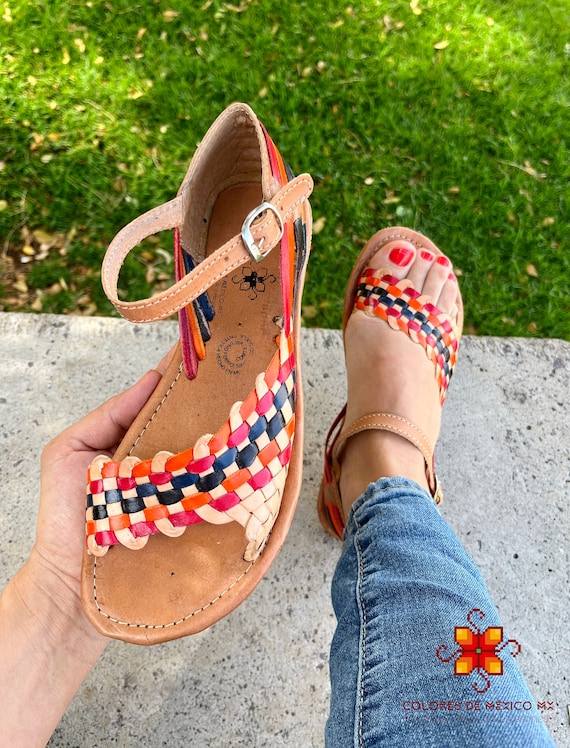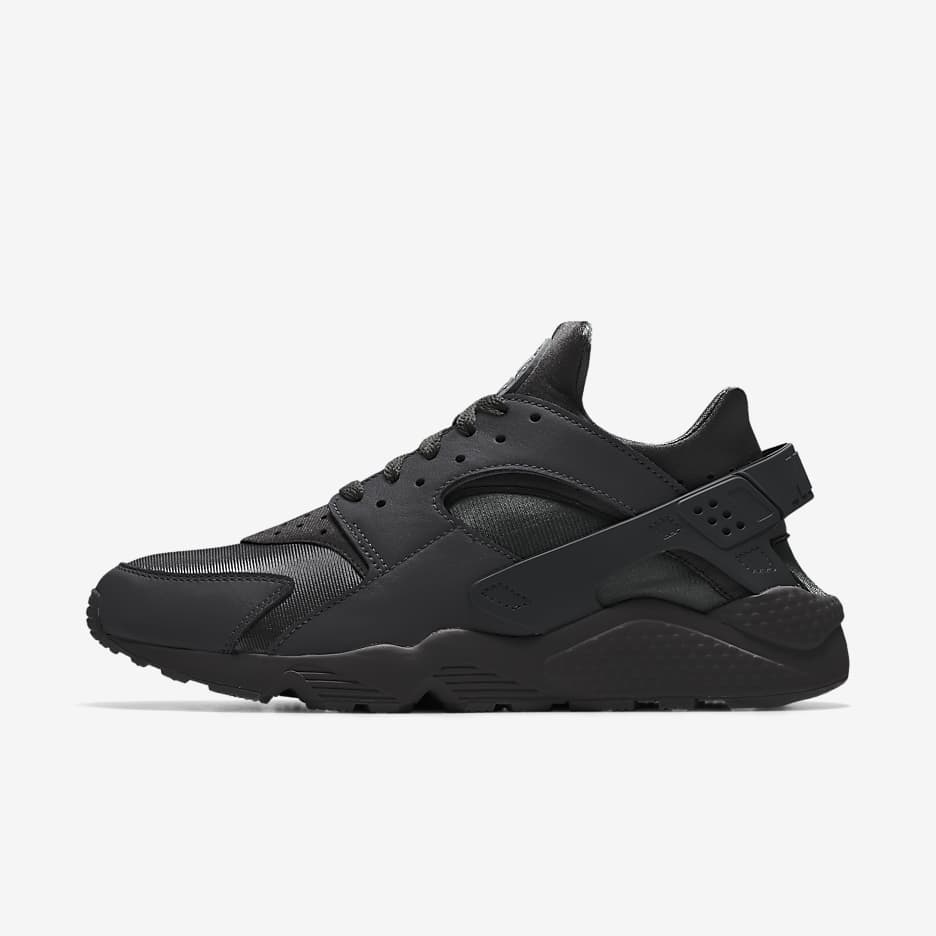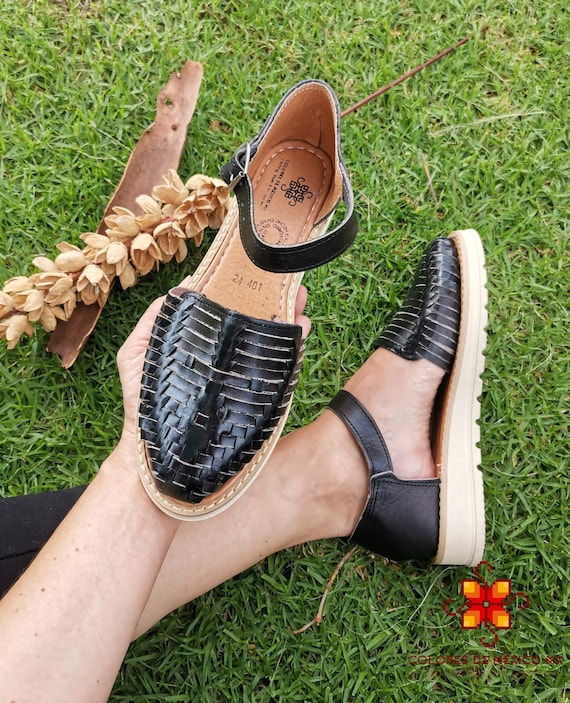The Ultimate Guide to Huaraches Shoes: From Traditional Mexican Sandals to Modern Nike Designs
Discover the fascinating world of huaraches shoes, from their ancient Mexican origins to modern athletic innovations. Whether you're seeking traditional handwoven leather sandals or contemporary Nike designs, this comprehensive guide covers everything you need to know about choosing, styling, and caring for these versatile footwear options. Explore more outdoor gear and hiking essentials for your next adventure.
The Rich History and Origins of Huaraches Shoes

The story of huaraches shoes begins centuries ago in the rugged landscapes of Mexico, where indigenous artisans developed what would become one of the world's most enduring footwear designs. The term "huarache" derives from the Purépecha language word "kwarachi," which directly translates to "sandal" in English. These remarkable shoes represent far more than simple footwear—they embody generations of Mexican craftsmanship, cultural identity, and practical innovation.
Archaeological evidence suggests that early forms of huaraches shoes were worn by Pre-Columbian civilizations, with their origins tracing back to farming communities in Jalisco, Michoacán, Guanajuato, and Yucatán. Originally constructed entirely from leather, these sandals featured hand-woven braided leather straps that formed intricate patterns across the foot. The traditional construction method involved cutting a single piece of leather for the sole, then creating elaborate woven patterns from thin leather strips that would secure the foot while allowing maximum breathability.
The revolutionary aspect of traditional huaraches shoes lay in their ingenious design philosophy. Unlike rigid footwear that fought against natural foot movement, huaraches embraced flexibility and breathability. The woven leather upper created a second-skin effect that moved with the wearer's foot while providing protection from rough terrain. This design principle proved so effective that it survived the Spanish conquest and continued evolving through Mexico's colonial period and beyond.
During the 1930s, huaraches shoes underwent a significant transformation when Mexican craftsmen began recycling automobile tire rubber for soles. This innovation dramatically improved durability while maintaining the sandals' traditional flexibility. The combination of recycled rubber soles and hand-woven leather uppers created the modern huarache template that remains largely unchanged today. This adaptation demonstrated the Mexican artisans' remarkable ability to blend tradition with practical innovation, ensuring their craft's survival in an industrializing world.
Cultural Significance and the Chicano Movement
The cultural importance of huaraches shoes extends far beyond their practical function. During the 1960s Chicano Movement, these sandals became powerful symbols of cultural pride and resistance. Chicano students and activists wore huaraches as a deliberate rejection of mainstream American fashion, reclaiming what had been stereotyped as "poverty shoes" and transforming them into emblems of Mexican heritage and identity. This cultural reclamation paralleled the broader hippie movement's adoption of huaraches, which appreciated their handmade authenticity and comfort during the countercultural revolution of the 1960s.
Understanding Different Types of Huaraches Shoes
The modern market for huaraches shoes encompasses a fascinating variety of styles, each serving different needs and preferences. Traditional Mexican huaraches remain the most authentic option, featuring hand-woven leather uppers, recycled tire rubber soles, and construction techniques passed down through generations of artisans. These authentic versions typically showcase intricate braiding patterns that require hours of skilled labor to complete, making each pair unique.
Contemporary huaraches shoes have evolved to include several distinct categories. Casual lifestyle huaraches emphasize comfort and style for everyday wear, often incorporating modern materials like cushioned insoles, flexible rubber outsoles, and refined leather finishes. These versions maintain the traditional aesthetic while adding contemporary comfort features that appeal to urban consumers seeking both style and functionality.

Athletic and Performance Huaraches
Athletic huaraches shoes represent a completely different category, with Nike's Air Huarache leading this segment since 1991. These performance-oriented designs incorporate advanced materials like neoprene, synthetic leather, and specialized cushioning systems. The athletic versions prioritize support, durability, and style over the breathable simplicity of traditional sandals, creating hybrid shoes that blend huarache-inspired aesthetics with modern sneaker technology.
Outdoor and adventure huaraches shoes cater to hikers, travelers, and outdoor enthusiasts who appreciate the traditional sandal's breathability but need enhanced protection and durability. Brands like Keen and specialized outdoor companies create rugged versions featuring protective toe caps, aggressive tread patterns, and quick-drying materials while maintaining the open, airy feel that makes huaraches ideal for warm-weather adventures.
Pro Tip: When shopping for huaraches shoes, consider your primary use case. Traditional leather versions excel for casual wear and cultural authenticity, while athletic versions offer superior performance for active lifestyles.
Nike Air Huarache: A Revolutionary Design Legacy
The Nike Air Huarache story begins with visionary designer Tinker Hatfield, who revolutionized athletic footwear by drawing inspiration from traditional Mexican huaraches shoes. When Nike introduced the Air Huarache in 1991, it represented such a radical departure from conventional sneaker design that it didn't even feature the iconic swoosh logo. Hatfield's genius lay in recognizing that the ancient Mexican sandal's sock-like fit and minimal construction could translate into a revolutionary athletic shoe.
The original Nike huaraches shoes featured a neoprene and spandex bootie construction that literally hugged the foot, leading to Nike's memorable advertising slogan: "Have You Hugged Your Foot Today?" This innovative design eliminated the traditional tongue and lacing system, instead relying on stretchy materials and a unique heel cage system to provide secure, customized fit. The shoe's minimalist aesthetic and sock-like comfort challenged every assumption about athletic footwear design.
Technical Innovation and Performance Features
Nike's interpretation of huaraches shoes incorporated several groundbreaking technologies. The neoprene upper provided lightweight flexibility while maintaining structural integrity, while the integrated heel cage system offered stability without adding bulk. The Air cushioning system in the midsole delivered impact protection, making these shoes suitable for both casual wear and light athletic activities. The rubber outsole featured a durable tread pattern designed for multi-surface traction.
Over three decades, Nike has continuously evolved its huaraches shoes line, introducing variants like the Air Huarache Light, Huarache Run, and numerous limited-edition colorways. Each iteration maintains the core design philosophy while incorporating updated materials and technologies. The shoes have transcended their athletic origins to become fashion statements, worn by celebrities, influencers, and style-conscious consumers worldwide.
Find Nike Air Huarache ShoesComplete Buying Guide for Huaraches Shoes
Selecting the perfect pair of huaraches shoes requires understanding the key factors that differentiate quality options from inferior alternatives. Authentic traditional huaraches should feature genuine leather construction with hand-woven uppers, while athletic versions should incorporate high-quality synthetic materials and proven cushioning technologies. The construction quality significantly impacts both comfort and durability, making it essential to examine craftsmanship details before purchasing.

Sizing and Fit Considerations
Proper sizing for huaraches shoes differs significantly between traditional sandals and athletic versions. Traditional leather huaraches typically run small and require breaking in, as the leather gradually stretches and conforms to your foot shape. Most experts recommend sizing up half a size for new leather huaraches, allowing room for the natural stretching process. The leather will initially feel snug but should never cause pain or restrict circulation.
Nike huaraches shoes present different sizing challenges due to their sock-like construction. Many wearers find these shoes run slightly narrow, particularly around the midfoot where the neoprene bootie creates compression. The unique slip-on design means you cannot adjust fit through lacing, making accurate sizing crucial. Most Nike Huarache buyers report success with their normal athletic shoe size, though those with wider feet may need to size up.
Quality Indicators and Red Flags
When evaluating traditional huaraches shoes, examine the leather quality and weaving consistency. Genuine handmade versions feature slight irregularities that indicate human craftsmanship, while machine-made imitations show overly uniform patterns. The leather should feel supple yet substantial, with natural grain patterns and minimal chemical odors. Authentic recycled tire soles display visible tire tread patterns and feel substantially heavier than cheap rubber alternatives.
Warning: Avoid extremely cheap huaraches shoes that claim authenticity. Genuine handmade versions require significant labor and quality materials, making rock-bottom prices impossible while maintaining quality standards.
My Personal Experience with Huaraches Shoes
My journey with huaraches shoes began during a backpacking trip through Mexico fifteen years ago, where I discovered authentic handmade pairs in a small Oaxaca market. The elderly artisan explained the three-day process required to complete each pair, from cutting the leather to hand-weaving the intricate upper patterns. That first pair of traditional huaraches taught me the profound difference between mass-produced footwear and genuine craftsmanship.
During my initial weeks wearing those Oaxacan huaraches shoes, I experienced the classic break-in period that every traditional leather huarache owner knows well. The first few days proved challenging as the stiff leather gradually molded to my foot shape, but by the second week, they felt like natural extensions of my feet. The transformation was remarkable—what began as rigid sandals evolved into the most comfortable footwear I had ever worn.
Seasonal Adventures and Durability Testing
Over the past decade, I have worn various huaraches shoes across diverse environments, from desert hiking in Arizona to urban exploring in European cities. Traditional leather huaraches excel in hot, dry climates where their breathability prevents foot overheating, while their flexible soles adapt well to uneven terrain. However, I learned they perform poorly in wet conditions, as leather becomes slippery and takes considerable time to dry.
My Nike Air Huarache collection serves different purposes, providing athletic-style comfort for casual city wear and travel. These synthetic huaraches shoes offer superior weather resistance and require no break-in period, making them ideal for spontaneous adventures. The neoprene construction dries quickly after rain exposure, though it lacks the natural breathability of traditional leather versions.
Lesson Learned: Build a small rotation of huaraches shoes for different occasions. Traditional leather pairs for dry weather and cultural experiences, athletic versions for active pursuits and unpredictable weather.
User Reviews and Community Feedback
Amazon Customer Review Summary: "After trying several brands of huaraches shoes, I can confidently say that authentic Mexican-made versions provide unmatched comfort once broken in. The initial stiffness gives way to a custom-molded fit that no mass-produced sandal can replicate. Worth every penny for the quality and cultural authenticity." - 4.3/5 stars across 900+ reviews.
Reddit Community Consensus: r/BareFootRunning users consistently praise traditional huaraches shoes for their minimal interference with natural foot mechanics. Many report improved foot strength and reduced joint pain after switching from conventional shoes. The main complaints center around sizing difficulties and limited weather versatility.
Quora Expert Opinion: Fashion consultants frequently recommend huaraches shoes as versatile warm-weather footwear that bridges casual and semi-dressy occasions. The handmade aesthetic appeals to consumers seeking authentic alternatives to mass-market fashion, though styling requires careful consideration to avoid appearing too casual in professional settings.
Shop Highly-Rated Women's HuarachesStyling Tips and Fashion Guide
Mastering the art of styling huaraches shoes requires understanding their unique position between formal and casual footwear. Traditional leather huaraches naturally complement relaxed, organic fashion choices like linen shirts, cotton pants, and flowing dresses. Their handmade aesthetic pairs beautifully with other artisanal pieces, creating cohesive looks that celebrate craftsmanship and authenticity over mass-market fashion trends.
For men, huaraches shoes work exceptionally well with casual summer wardrobes. Pair traditional brown leather huaraches with khaki chinos and a white linen shirt for timeless warm-weather elegance. The key lies in balancing the rustic nature of huaraches with slightly refined clothing choices—avoid pairing them with formal suits or overly technical outdoor gear, which creates jarring style contrasts.
Seasonal Styling Strategies
Spring and summer represent prime seasons for traditional huaraches shoes, when their breathability provides maximum comfort benefits. During these warmer months, embrace lighter fabrics and earth-tone color palettes that complement the natural leather appearance. Avoid wearing socks with traditional huaraches, as this defeats their breathable design purpose and creates an awkward visual appearance.
Nike huaraches shoes offer greater styling versatility, transitioning seamlessly between athletic and streetwear contexts. These synthetic versions pair well with joggers, jeans, shorts, and even some dress pants for contemporary casual looks. The sleek silhouette and varied colorways make them suitable for year-round wear, unlike traditional sandal-style huaraches that work best in warm weather.
Professional and Semi-Formal Applications
While huaraches shoes traditionally lean casual, certain styling approaches can elevate them for business-casual environments. High-quality leather huaraches in black or dark brown can work with tailored chinos and button-down shirts, particularly in creative industries or warm-climate business settings. The key lies in choosing refined versions with minimal embellishments and pairing them with elevated casual pieces.
Style Warning: Never wear traditional huaraches shoes to formal events, job interviews, or situations requiring professional dress codes. Save them for casual social occasions, travel, and relaxed work environments.
Frequently Asked Questions
What's the difference between huaraches and regular sandals?
Huaraches shoes feature distinctive woven leather uppers that create a closed-toe design while maintaining breathability through the weaving pattern. Unlike typical sandals with simple strap systems, huaraches use intricate braided patterns that secure the entire foot. Traditional huaraches also incorporate recycled tire rubber soles for enhanced durability. The construction method involves cutting a single leather piece for the sole, then hand-weaving thin leather strips to form the upper, creating a custom-molded fit impossible with mass-produced sandals. This traditional technique results in footwear that combines the breathability of sandals with the security and protection of closed shoes.
How do I break in new leather huaraches?
Breaking in new leather huaraches shoes requires patience and gradual wear to avoid discomfort or blisters. Start by wearing them for 30-60 minutes daily around your house, allowing the leather to slowly stretch and conform to your foot shape. Apply leather conditioner to speed softening, focusing on areas that feel particularly stiff. After the first week, gradually increase wearing time to 2-3 hours daily. The complete break-in process typically takes 2-3 weeks of regular wear. Never force the process by wearing new huaraches for extended periods initially, as this can cause painful pressure points and potentially damage the leather weaving. Well-broken-in leather huaraches should feel like natural extensions of your feet.
Are Nike Huaraches good for running?
Nike huaraches shoes can handle light running and casual jogging, but they weren't designed as dedicated running shoes. The neoprene upper provides excellent flexibility and comfort for short-distance runs, while the Air cushioning system offers moderate impact protection. However, the minimal support structure and flexible construction make them unsuitable for serious running training or long-distance events. Most runners find Nike Huaraches work well for gym workouts, casual neighborhood jogs, and cross-training activities. For serious running pursuits, dedicated running shoes with enhanced stability features, motion control systems, and specialized cushioning technologies provide better performance and injury prevention. Think of Nike Huaraches as lifestyle athletic shoes rather than performance running equipment.
How do I care for and clean huaraches?
Proper care extends the lifespan of huaraches shoes significantly, particularly for leather versions requiring special attention. For traditional leather huaraches, remove loose dirt with a soft brush, then clean with damp cloth using mild soap solutions. Apply leather conditioner monthly to prevent cracking and maintain flexibility. Allow thorough air drying away from direct heat sources, which can cause leather shrinkage and cracking. For synthetic Nike Huaraches, use mild detergent and water for cleaning, avoiding harsh chemicals that damage neoprene materials. Store both types in cool, dry locations with adequate air circulation. Never machine wash traditional leather huaraches, as water exposure can cause shrinkage and weaving damage. Regular conditioning and proper storage ensure your huaraches maintain their appearance and structural integrity for years of comfortable wear.
What's the cultural significance of wearing huaraches?
Wearing huaraches shoes carries deep cultural significance rooted in Mexican heritage and indigenous craftsmanship traditions. For Mexican and Chicano communities, huaraches represent cultural pride, resistance to assimilation, and connection to ancestral traditions. During the 1960s Chicano Movement, wearing huaraches became a powerful statement of cultural identity and rejection of mainstream American fashion expectations. Today, choosing authentic handmade huaraches supports traditional artisan communities and helps preserve ancient crafting techniques. However, non-Mexican wearers should approach huaraches with cultural respect, understanding their significance beyond mere fashion choices. Supporting authentic Mexican-made versions rather than cheap imitations demonstrates respect for the cultural traditions behind these remarkable shoes. The growing popularity of huaraches worldwide has created opportunities for Mexican artisans while also raising concerns about cultural appropriation and commercialization of indigenous designs.
Conclusion
The world of huaraches shoes encompasses far more than simple footwear—it represents a fascinating intersection of ancient craftsmanship, cultural identity, and modern innovation. From their Pre-Columbian origins in Mexican indigenous communities to Nike's revolutionary athletic interpretation, huaraches have demonstrated remarkable adaptability while maintaining their core appeal of comfort, breathability, and distinctive aesthetic character.
Whether you choose traditional handwoven leather huaraches that connect you to centuries of Mexican artisan traditions or opt for contemporary Nike designs that blend heritage inspiration with modern athletic technology, huaraches shoes offer unique benefits unavailable in conventional footwear. The key lies in understanding which style best serves your needs, lifestyle, and values while respecting the cultural significance behind these remarkable designs.
As global interest in authentic, handmade products continues growing, huaraches shoes represent an excellent investment in both personal comfort and cultural appreciation. By choosing quality versions from reputable sources and caring for them properly, you become part of a tradition that spans continents and centuries, supporting artisan communities while enjoying some of the most comfortable and distinctive footwear ever created.
Consider exploring other quality outdoor footwear options and gear at specialized shoe collections, or discover more about athletic footwear like Air Force 1 shoes and luxury Amiri designs. For streetwear enthusiasts, explore Off-White collaborations or check out BAPE streetwear and Bapesta collections.
Ready to Find Your Perfect Huaraches?
Explore our curated selection of authentic and modern huaraches shoes
Shop All Huaraches More Outdoor Gear